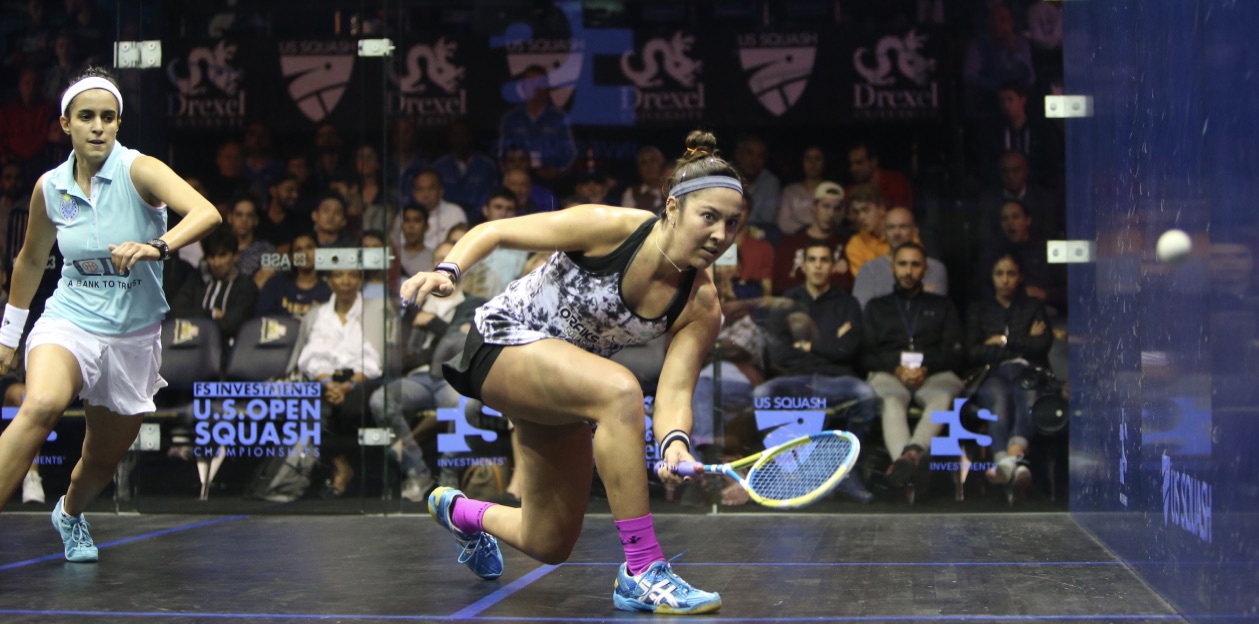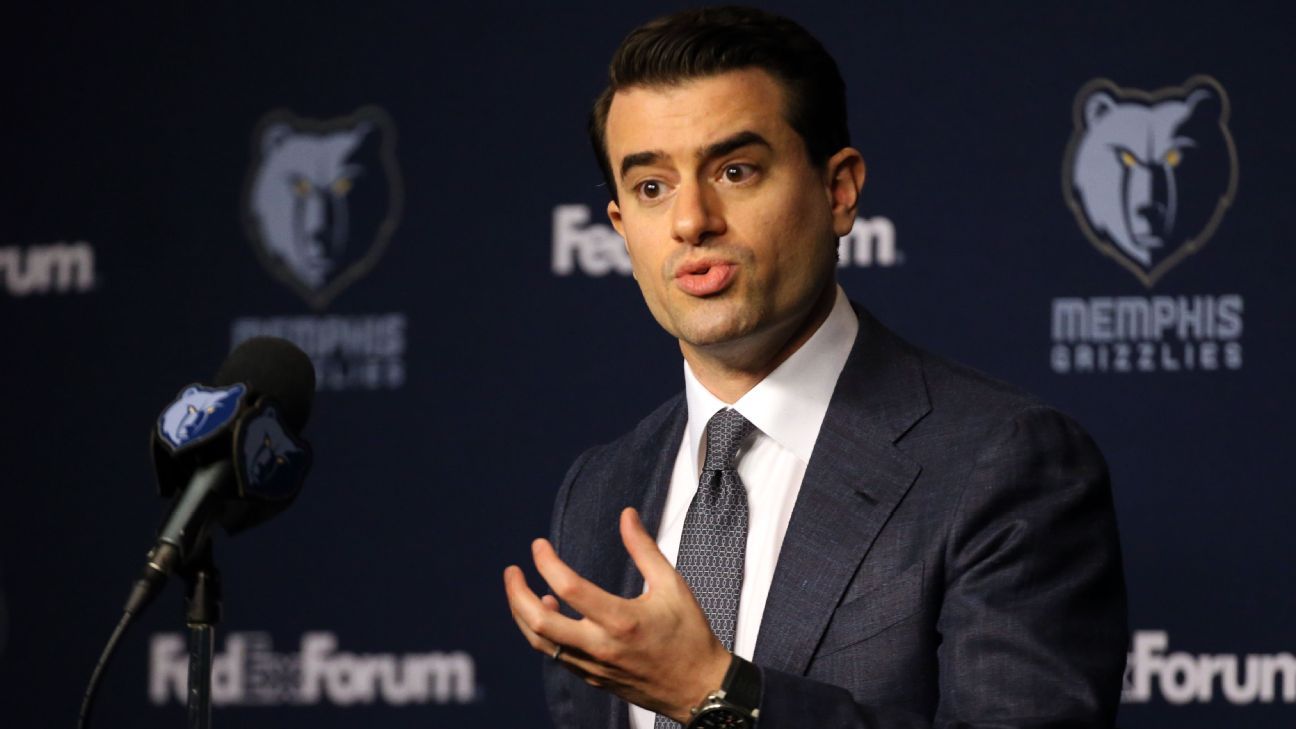Malgorzata Cerlich in action with her stringing machine
Polish stringer turns her stencils into works of art
By ROSANNA RADLINSKA-TYMA – Squash Mad Correspondent
There are not many female stringers in squash, and we are delighted to discover a relative newcomer to the ranks in the shape of Małgorzata Cerlich from Poland. Squash Mad’s Rosanna Radlinska-Tyma ramps up the tension, fires some questions for Malgorzata and ties up the loose ends.
SM: Hi Małgorzata.
MC: Hi Rosanna.
SM: How long have you been stringing?
MC: I’ve been stringing rackets since 2017.
SM: Which club are you based at?
MC: At the best one, Squashfit in Katowice ?
SM: Was it a natural transition to stringing or were you always interested?
MC: Not everyone who plays squash takes up a stringing services… ? From the very beginning of my squash adventure (as a receptionist of Squash4You in Cracow) I have been interested in squash equipment. My, then, boss (Maciej Maciantowicz) has been organising all sort of workshops and I have been asking coaches what it is all about. I had not started stringing then as it appeared “cosmically complicated” to me!
SM: Why stringing? What is so fascinating about it?
MC: Stringing requires some great deal of focusing (it’s easy to make mistakes), but despite that, it makes me feel relaxed. It was also a challenge for me because I didn’t know any woman stringer.
SM: Have you taken any course? Do you have a mentor and what is his/her name?
MC: My first stringing guru was Michal Szostek, who knew exactly how to string the rackets for squash players and each of them was happy with his work! It’s easy to guess that only he was stringing my first racket!
My first knowledge, though, I gained from Darek Kwosek and Maciek Stolecki in the Squashfit club. Darek showed me how to do it, Maciek advised me on many occasions, also disclosed a few solutions and after 18 months we challenged each other who was the first to string the racket! I need to boast a bit that it was me who was faster by a few seconds ? Marcin Kozik is also a good stringer and I also ask him for a piece of advice if needed. I haven’t taken any courses. I simply learned from others.
SM: Do you know that you can gain an official stringing qualification called Master Professional Stringer?
MC: Yes, I do and I know it from you Rosanna!
SM: If you could go to such a course, would you do it?
MC: Yes, of course !!!
SM: If there is a problem with stringing, do you solve it yourself or do you seek help and support?
MC: First of all I try to solve myself because if I do it myself, then I won’t forget it, ha ha! If that doesn’t work, I look up in the internet (usually “uncle Google”), then I ask Maciek Stolecki or Marcin Kozik ?
SM: Do you have your little stringing secrets and do you share them with others?
MC: I don’t have any secrets, but I share with others my little tricks which I learned from different sources. One of my friends bought a stringing machine and I taught him what I knew. I am happy that I could influence his development! I am also supported by the “old” specialists after all ?
This slideshow requires JavaScript.
SM: You have produced some beautiful designs of your own. Where did you take the idea of different stencils on the rackets you string from?
MC: I started with my own racket when I found a marker in the club! I wanted to have an original and unique racket where I could put a symbol which means a lot to me. Then, there were different stencils and finally the players started asking where these beauties come from and who does them. I was adding different stencils as bonuses after restringing for regular clients. Then somebody advised to create a fan page on Facebook ?
SM: What is the model of the stringing machine you use?
MC: GAMMA 5800 ELS
SM: Have you used others?
MC: No, I haven’t.
SM: Do you have favourite rackets and strings?
MC: My favourite strings are Ashaway Ultranick 17 and favourite rackets are HEAD rackets.
SM: Which racket, in your opinion, is the most complex/difficult to string and why?
MC: All fan stringing pattern rackets eg. Dunlop Blackstorm Titanium – more focus is required ? but generally, the worst rackets to string are TENNIS rackets! I really dislike stringing them. Their strings are very stiff and they hurt my fingers (having female fingers is not a bonus in this case).
SM: Which strings are the best in your view and why?
MC: I have two favourite and well-tested strings: Ashaway and Tecnifibre.
SM: Do you have devoted clients who can’t live without your stringing service?
MC: There are a few … ?
SM: The biggest dream related to stringing?
MC: To develop the best stringing service in Silesia and, thanks to you, to obtain a Master Professional Stringer qualification.
SM: The biggest dream related to squash?
MC: Once, I would have said ‘to meet Ramy Ashour’, hahah! But really, right now, to run my own squash club! Who knows, perhaps soon I’ll be on my way to the latter… ? Stay tuned!
SM: Thank you Malgorzata and all the best with your future plans.
Pictures courtesy of Malgorzata Cerlich
Posted on August 21, 2019

























 Phone: (800) 737. 6040
Phone: (800) 737. 6040 Fax: (800) 825 5558
Fax: (800) 825 5558 Website:
Website:  Email:
Email: 






